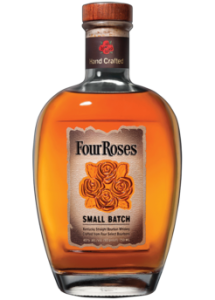Fad Focus #1: Peat
Whisky, like most things goes through phases. Some of these phases are more macroeconomic like the historical boom and bust periods for whisky sales and their impacts on production and distillery openings and closings. Other phases tend to seem more like fads.
fad – noun
a temporary fashion, notion, manner of conduct, etc., esp. one followed enthusiastically by a group
– Random House Dictionary, © Random House, Inc. 2006
Fads are not necessarily a bad thing. All fads aren’t the equivalent of a polyester leisure suit. In whisky fads tend to be inroads to innovation. This blog will be my first in a 3+ part series discussing the various fads in whisky that have come and gone. Today’s focus will be the continued “peatification” (I just made that word up) of whisky in recent years.
What is peat you ask? Peat is an accumulation of decayed or decaying vegetation that typically forms in damp regions that can be cut, dried, and used for fuel. When it comes to whisky, peat can be used in peat fires to dry malted barley that will go into making whisky. At a very basic level this tends to impart a smoky flavor most prevalent in Scotch. Peat taken from coastal areas may also impart a salty or briny flavor in addition to the smoke.
In years past Scotch was easily categorized by its use of peat. Today the degree of peat used in Scotch production varies widely by region and distillery. Islay tends to be known as the powerhouse region for producing peaty whiskies but peat branched out. Connemara Irish Whiskeys use peat and tend to taste more like Scotch than their Irish brethren.
How do we measure how peaty a whisky is? Peat levels are measured by the phenol level in parts per million, usually abbreviated as “ppm”. Phenols are organic compounds imparted on the malted barley when peat is burned to dry the barley. The higher the ppm level is, the more heavily peated the whisky.
So you may be saying “thanks for the history lesson but this has gone on for decades, why is this a fad?” Well, using peat isn’t. The degree to which we’re seeing peat used is. A long time ago in a whisky industry far, far away whiskies were all easily categorized and labeled. Irish was triple distilled and unpeated. Speyside had very little peat (0 to 10ppm lets say). Islay whiskies were heavily peated (20 to 30ppm lets say). Campbeltown and Highland whiskies fell somewhere in the middle. In this land of yore the Speysides were deemed the most desirable because they were easier to drink without all that peat and more closely resembled the famous blends that sold so well. This is partly how brands like Glenfiddich and Glenlivet became the powerhouses that they are today. The more peaty stuff was relegated to aficionados and blends.
Jump a head a few decades and Scotch started seeing a boom in interest. With the boom came the desire for new and differentiated experiences. Those peaty whiskies started getting more attention because they have a more robust flavor.
With me so far? Good because this is where things start to turn the corner. As the push towards peat accelerated we started seeing distilleries releasing peatier and peatier whiskies. At first these whiskies came from their peatier stocks that may have gone into blends before. However, soon they started making their whiskies peatier. From out of nowhere Bruichladdich comes out with Port Charlotte at 40ppm and Ardbeg blasts out with whiskies like their Uigeadail release. Now peat is really kicked into high gear. Then last year Bruichladdich came out with Octomore at whapping 131 ppm.
Let me just say that I like peated whiskies. I like them a lot. Some of my absolute favorite drams are very peaty. But it’s seems that we’re getting to the point where we’re kicking up the peat notch more and more just for the sake of doing it.
I liken it to hot sauce. I love spicy food. I love hot sauce on just about everything to some degree. But there are sauces out there that take the heat to such an extreme that they sacrifice flavor. I worry that Scotch may head in that directions. 131ppm! When will the madness stop?
– Richard


